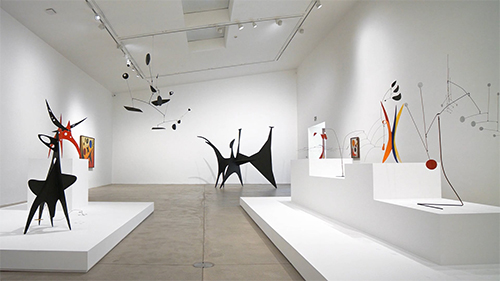by Parker Ramsay

On East 3rd Street in Los Angeles, the showrooms at Hauser & Wirth break away from the typical post-industrial chic of the surrounding Arts District. Solid white walls and polished concrete floors bear a sheen of sterility, defiant against trends to hang art on brick walls. There is light everywhere, eliminating the possibility of shadows. Windows and ventilation grates are absent, prohibiting the passage of moving air. And so, Alexander Calder’s mobiles sit frozen, restricted from displaying the anti-gravitational nuance for which they are known. Rotational joints appear locked in place, constraining metal ligaments from separating or conjoining in motion. Touching is strictly not allowed. Attempts by children to blow air are met with reprimands from security, loaded five or six guards deep in a showroom containing only twelve pieces.
The viewer can physically move around the art, imagining the possibility of various spirals and spins, but any permutation of the sculptures’ various elements is limited by the human mind. [Read more…]



